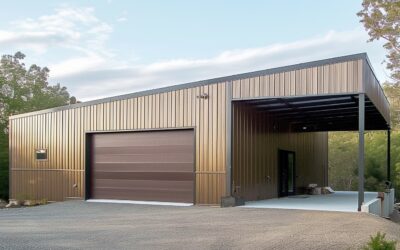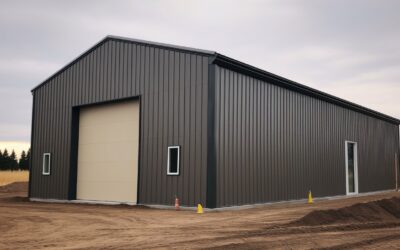Resilient Roots: The Benefits of Steel in Agri-Structures
Has the thought ever crossed your mind about how our food is produced, or the structures that house the entire process? The reality is that a vast part of our agricultural industry relies on sturdy agri-structures. One of the most utilized materials in these structures is steel, a substance known for its unparalleled strength and durability. This article delves into the various benefits of steel agri-structures and why they’re quickly becoming the material of choice for many farmers and agricultural enterprises.
Why Steel is an Excellent Choice for Agri-Structures
Steel is more than just a strong construction material. It’s a symbol of the resilience and the efficiency inherent in modern agriculture. Given the diverse conditions and harsh environments agri-structures are expected to withstand, it is no wonder steel is the preferred material of use.
So, what makes steel, with its silvery-gray elegance, so ideal?
Strength and Durability
Steel is strong. In the world of construction and agricultural buildings, strength isn’t a luxury—it’s a necessity. Buildings need to last for several decades, often under strenuous conditions. Steel agri-structures assure that longevity. They can withstand weather extremes, from harsh sun to brutal snowstorms, effortlessly. The buildings stand firm like unwavering sentinels, ensuring food, livestock and equipment are securely shielded from the elements.
Cost-Effectiveness
Building an agricultural structure is a hefty investment, but steel offers cost-effectiveness that’s hard to rival. Compared to other common construction materials like wood or brick, steel is economical in both the short and long term. Its long lifespan, low maintenance costs and energy efficiency all contribute to significant cost savings.
Regions Embracing Steel Agri-Structures
Countries worldwide, including Canada, are incorporating steel in their farming methods for its resilience and efficiency. According to the Canadian Steel Producers Association, using steel agri-structures demonstrates a commitment to the environment while simultaneously optimizing efficiency.
Environmental Impact
Farming with a conscience includes being mindful of the environmental implications of agri-construction. One of the outstanding benefits of steel agri-structures is its minimal environmental footprint. By championing eco-friendly steel farming, industries underscore their dedication to sustainable growth—something both our planet and future generations will appreciate.
Recyclability
Steel is 100% recyclable, which contributes to sustainability efforts. Old steel buildings won’t end up in landfills, instead, they are reincarnated into new structures or products. This infinite recyclability without degradation is a feather in the cap for steel’s environmental credentials.
Examples of Steel Agri-Structures
On most farms, there are several structures pivotal to operations, like barns, storage and processing facilities, greenhouses, poultry houses, and more. Steel provides a sturdy, robust and durable option for all these structures.
Take, for example, the metal barn. Metal barns constructed from steel are extraordinarily resilient. They provide superior protection to livestock and farm equipment from harsh weather conditions. With the added benefit of being fire-resistant, these barns offer unparalleled safety.
Conclusion
The resilience offered by steel agri-structures is unmatched. With superior durability, cost-effectiveness, versatility and recyclability, steel is instrumental in enhancing agricultural productivity and profitability. Opting for steel means choosing to support the economy, the environment, and the sustainability of our agriculture industry.
So the next time you enjoy a meal, remember the resilient roots that helped deliver it to your plate — the steel agri-structures that defined modern farming practices. They are symbols of our agricultural resilience and the enduring strength of the land we cultivate.





